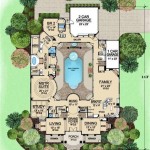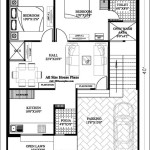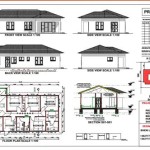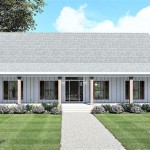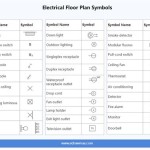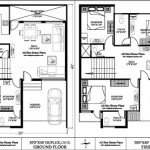Small Interior House Plans: Maximizing Space & Functionality
The demand for smaller, more efficient homes is on the rise. Factors such as urbanization, rising housing costs, and a desire for simpler living have contributed to this trend. Small interior house plans offer a practical and often more affordable alternative to larger dwellings, requiring careful planning and innovative design strategies to maximize space and functionality.
Designing a small interior house plan requires a shift in perspective. Eliminating underutilized spaces and prioritizing multi-functional areas become crucial. The focus shifts from square footage to livability, emphasizing efficient storage solutions, open floor plans, and strategically placed natural light.
### Key Point 1: Understanding Space Limitations and Prioritizing NeedsBefore embarking on the design process, a thorough assessment of needs and lifestyle is essential. This involves identifying the essential functions of the home and determining the minimum space required for each. Consider factors such as the number of occupants, work-from-home requirements, entertaining habits, and storage needs. A detailed inventory of belongings can help streamline the design and identify items that can be eliminated or stored off-site.
Once needs are identified, prioritizing them becomes paramount. Distinguish between essential functions and desirable features. This prioritization will guide the allocation of space and inform design decisions. For example, a dedicated home office may be prioritized over a formal dining room if remote work is a primary requirement. Alternatively, a large kitchen might be deemed essential for individuals who enjoy cooking and entertaining frequently. Compromises are often necessary in small spaces, and prioritizing needs ensures that the most important functions are adequately addressed.
Understanding building codes and regulations is also crucial. Local zoning ordinances often dictate minimum room sizes, setback requirements, and other restrictions that can impact the design of a small house. Consulting with a qualified architect or builder early in the process can help navigate these regulations and ensure compliance. Ignorance of these regulations can lead to costly delays and revisions later on.
Consider the orientation of the house on the property. Optimizing the placement of windows and doors to maximize natural light and ventilation can significantly enhance the livability of a small space. Southern exposure typically provides the most consistent sunlight throughout the day, while eastern exposure can offer morning light. Strategic landscaping can also provide shade and privacy.
### Key Point 2: Implementing Space-Saving Design StrategiesSeveral design strategies can be employed to maximize space in small interior house plans. Open floor plans are a common and effective solution, eliminating walls between living areas to create a sense of spaciousness. Combining the living room, dining room, and kitchen into a single open area allows for greater flexibility and flow. However, careful consideration must be given to acoustics and visual separation to prevent the space from feeling chaotic.
Multi-functional furniture is another key element. Sofa beds, convertible tables, and storage ottomans can serve multiple purposes, reducing the need for separate furniture pieces. Built-in storage solutions, such as shelving and cabinets, can maximize vertical space and minimize clutter. Consider utilizing space under stairs, in hallways, and above doorways for storage. Wall-mounted shelves are excellent for displaying books and decorative items without taking up valuable floor space.
Verticality is often underutilized in small spaces. High ceilings can create a sense of airiness and allow for the addition of lofts or mezzanine levels for sleeping or storage. Tall, narrow windows can maximize natural light without compromising wall space. Vertical gardens can also add visual interest and a touch of nature without taking up floor space.
Clever storage solutions are essential for maintaining order and maximizing space. Consider incorporating hidden storage compartments in furniture, such as drawers under beds or benches. Wall-mounted organizers can keep items off the floor and within easy reach. Using clear storage containers allows for easy identification of contents and keeps items organized. Decluttering regularly is also crucial for maintaining a sense of spaciousness.
Mirrors can be strategically placed to create the illusion of more space. Placing a large mirror on a wall can visually double the size of the room. Mirrors can also reflect natural light, making the space brighter and more inviting. Consider using mirrored closet doors or backsplashes to further enhance the sense of space.
### Key Point 3: Material Selection, Lighting, and Color PaletteThe selection of materials, lighting, and color palette can significantly impact the perceived size and atmosphere of a small space. Lighter colors tend to make a room feel larger and brighter, while darker colors can make it feel smaller and more intimate. Neutral color palettes, such as whites, creams, and grays, are often preferred for small spaces as they create a sense of openness and airiness. Accents of color can be added through furniture, accessories, and artwork.
Natural light is a valuable asset in any home, but it is especially important in small spaces. Maximizing natural light can make a room feel larger, brighter, and more inviting. Consider using large windows, skylights, or light tubes to bring in as much natural light as possible. Sheer curtains or blinds can allow light to filter through while providing privacy.
Artificial lighting should complement natural light and create a warm and inviting atmosphere. Layered lighting, which includes ambient, task, and accent lighting, is often the most effective approach. Ambient lighting provides overall illumination, while task lighting focuses on specific areas, such as a desk or kitchen counter. Accent lighting highlights architectural features or artwork. Recessed lighting is a space-saving option that provides general illumination without taking up valuable floor space.
Choosing the right flooring can also impact the perceived size of a room. Light-colored flooring can make a room feel larger and brighter, while dark-colored flooring can make it feel smaller and more intimate. Continuous flooring throughout the space can create a sense of flow and unity. Consider using durable and easy-to-clean materials, such as hardwood, tile, or laminate.
The scale of furniture and accessories is crucial in small spaces. Overly large furniture can overwhelm the space and make it feel cramped. Opt for smaller, more streamlined furniture pieces that are proportionate to the size of the room. Avoid cluttering the space with excessive accessories. Instead, choose a few well-chosen pieces that add visual interest without overwhelming the space.
Consider using translucent or transparent materials, such as glass or acrylic, to create a sense of openness and airiness. Glass shower doors, glass shelving, and acrylic chairs can allow light to pass through and visually expand the space. Clear acrylic furniture can also add a modern touch without taking up too much visual space.
### Additional Considerations: Sustainable Design and Technology IntegrationSustainable design principles can be effectively integrated into small interior house plans. Utilizing energy-efficient appliances, low-VOC paints, and recycled materials can minimize environmental impact. Passive solar design strategies, such as proper orientation and shading, can reduce energy consumption. Rainwater harvesting systems can provide water for irrigation and other non-potable uses. Small houses are often more energy-efficient due to their smaller footprint and reduced heating and cooling needs.
Technology integration can enhance the functionality and convenience of a small home. Smart home systems can control lighting, temperature, and security features remotely. Wireless technology can eliminate the need for unsightly cords and cables. Voice-activated assistants can streamline tasks and provide hands-free control of various devices. Consider incorporating charging stations and data ports throughout the home to accommodate electronic devices.
In conclusion, small interior house plans require careful planning and innovative design strategies to maximize space and functionality. By prioritizing needs, implementing space-saving solutions, and paying attention to material selection, lighting, and color palette, it is possible to create a comfortable and stylish living space that meets the needs of its occupants. The growing demand for smaller homes reflects a shift towards simpler, more sustainable living, and well-designed small interior house plans can offer a practical and affordable solution.

Small Home Plans And Modern Interior Design Ideas Tiny House Apartment Layout

Small Home Plans And Modern Interior Design Ideas

House Plans Under 500 Square Feet

Small Home Plans And Modern Interior Design Ideas House Layout

Looking For A Single Y House Check Out These Plans Ulric Home

Small House Design Tiny Floor Plans Trailer Cabin

Small House Plans And Design Ideas For A Comfortable Living

Small House Plans 6 5x8 With 2 Bedrooms Shed Roof Samhouseplans

Small House Plans Simple Tiny Floor Monster

1 Bedroom Apartment House Plans


